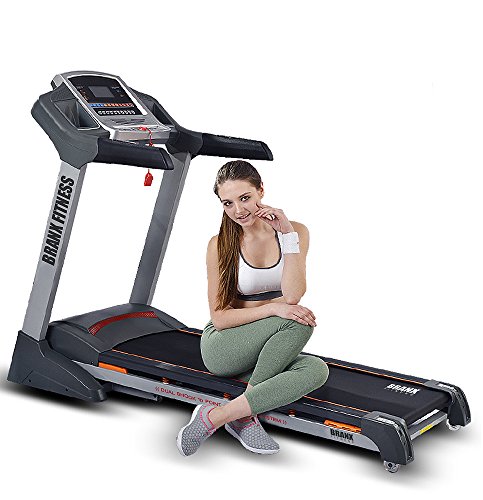All The Details Of Non Powered Treadmill Dos And Don'ts
The Rise of Non-Powered Treadmills: A Deep Dive into Their Benefits and Features
In a world increasingly concentrated on health, health, and fitness, the options for exercise equipment appear limitless. Amongst these, non-powered treadmills are gaining considerable traction. These machines, which do not rely on electrical power to run, provide a distinct blend of benefits and benefits that deal with a varied audience. This article explores the features, advantages, and factors to consider related to non-powered treadmills, while likewise responding to typical questions surrounding them.
What is a Non-Powered Treadmill?
A non-powered treadmill, frequently referred to as a manual treadmill, is a type of treadmill that is operated by the user's movement instead of an electric motor. Users power the belt forward by walking or running, making it a versatile choice for cardio workouts. Non-powered treadmills are frequently seen in home fitness centers, fitness studios, and rehabilitation centers due to their simpleness and effectiveness.
Comparison: Non-Powered vs. Powered Treadmills
To comprehend the growing popularity of non-powered treadmills, it's crucial to compare them versus their powered counterparts. The table listed below highlights some key distinctions:
Feature
Non-Powered Treadmill
Powered Treadmill
Source of power
Manual (user-driven)
Electric (motor-driven)
Cost
Normally more inexpensive
Often more expensive
Upkeep
Low maintenance needs
Greater upkeep requirements
Space Requirements
Normally less large
Can be big and heavy
Incline Adjustment
Manual modifications
Automatic settings readily available
Exercise Intensity
Variable; depends upon user effort
Constant; speeds set by the user
Risk of Injury
Lower, promotes natural motion
Greater, due to speed settings
Training Benefits of Non-Powered Treadmills
Engagement of Core Muscles: Non-powered treadmills necessitate a greater level of balance and core engagement. Manual Treadmill Non Electric should support themselves, which in turn incorporates core strength into the workout.
Natural Running Mechanics: As users move the tread, they simulate natural running or walking strategies, reducing the threats of injury related to busy powered treadmills.
Personalized Speed and Intensity: Because the treadmill counts on user effort, individuals can pick their exercise speed, making it perfect for both beginners and advanced athletes.
Increased Caloric Burn: Research shows that users might burn more calories on a non-powered treadmill compared to a powered one at comparable intensities. The factor? Manual treadmills can push the body to work more difficult and to maintain a higher level of intensity throughout the exercise.
Resilience: Non-powered treadmills are typically more rugged and constructed to last, with less electronic parts that may stop working in time.
Factors to consider for Choosing a Non-Powered Treadmill
Before purchasing, potential buyers need to think about the following features:
Feature
Factors to consider
Weight Limit
Ensure it suits your physique and requires
Belt Size
A larger belt can offer more comfort, especially for running
Incline Settings
Look for options to change incline for differing exercise strength
Frame Construction
Go with durable materials that can endure strenuous use
Mobility
Consider models that are easy to move or store out of the method
Frequently Asked Questions (FAQ)
1. Are non-powered treadmills appropriate for everyone?Yes, these treadmills are usually appropriate for users of all physical fitness levels. Nevertheless, people with particular health concerns ought to consult a doctor before starting any brand-new workout program.
2. Just how much do non-powered treadmills cost?Rates can vary commonly, usually varying from ₤ 200 to upwards of ₤ 2,000 based upon quality and functions. Manual alternatives tend to be more inexpensive than powered variations.
3. How do I preserve a non-powered treadmill?Upkeep tends to be minimal; just ensure that the belt is tidy and look for wear and tear occasionally. It's also crucial to keep moving parts lubed for smooth operation.
4. Can I run or walk on a non-powered treadmill?Yes, non-powered treadmills are created for both walking and running. Users can change their exercise intensity based on speed and stride.
5. Do I require to change the incline by hand?Yes, a lot of non-powered treadmills need manual changes for incline changes, permitting users to vary their exercises as wanted.
The non-powered treadmill stands as a useful and reliable workout service, best for those aiming to boost their workout routine without the complexities of powered machines. By supplying a rigorous exercise that engages the core and works the body holistically, these treadmills are created to create an effective cardio experience that accommodates all physical fitness levels. Their cost, durability, and overall efficiency for calorie burning contribute to their rise in popularity.
Whether you are an experienced professional athlete looking for a harder workout or a novice taking those initial steps towards physical fitness, non-powered treadmills use a welcoming alternative to the traditional electric treadmill. With the included convenience of lower upkeep and expense, they are worthy of factor to consider on your physical fitness journey.
